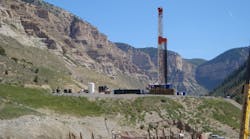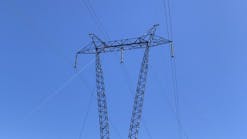Cheap, plentiful, domestic natural gas from the Marcellus shale in Pennsylvania and New York has been a game changer for the power grid in New England. More than a decade ago, natural gas produced about 15% of the electricity generated in our region; today, it’s fueling more than half. At the same time, stringent environmental regulations and higher fuel and operating costs have caused a sharp decline in electricity production from coal and oil plants. These plants that, combined, once produced 40% of the region’s power are now producing a fraction of that — less than 4% in 2012.
The shift toward natural gas has been a boon to the region in many ways, lowering both emissions and wholesale electricity costs. But investment in the gas pipeline infrastructure that brings cheap Marcellus gas into the region has not been sufficient to cope with the increased demand from natural-gas-fired generators, creating serious risks to grid reliability.
Increasingly, pipelines carrying shale gas are becoming constrained, especially during the winter when both heating and electricity loads are high. When the pipelines are operating at maximum capacity, gas to generators is restricted because of their fuel-procurement strategies — most procure gas in the secondary markets and have interruptible fuel arrangements that result in a just-in-time fuel-delivery system. If a contingency occurs on either the pipelines or with a large non-gas-fired generator, the effect on power-grid reliability can be immediate because of the sudden loss of gas supply or the sudden increase in gas demand. This risk requires the ISO to call on coal and oil units more frequently, but the availability and operational performance of these plants can be uncertain. Furthermore, many of these units are choosing to retire because they are no longer economically viable.
Early in 2013, ISO New England witnessed firsthand how these issues could have an impact on grid operations. During a cold spell in late January and Winter Storm Nemo in February, precarious operating conditions occurred because natural gas and oil generators were unavailable due to inadequate fuel arrangements. Despite significant challenges, our system operators were able to manage without resorting to formal emergency procedures, but the margin was razor thin.
If left alone, reliability issues will only escalate as more intermittent energy sources are introduced, more generator retirements take place and more natural-gas plants come on line. The answer to this problem is infrastructure investment. But there is a conundrum: How do we spur that investment?
ISO New England already has made numerous changes to the regional wholesale electricity markets: to give gas generators more time to procure fuel, the timing of the day-ahead market was changed to better align with the gas trading day; the 10-minute operating-reserve requirement was increased to compensate for poor resource performance; and because of last winter’s challenges, stakeholders and the FERC approved a stopgap solution to purchase incremental energy for helping ensure power-system reliability this winter. In addition, the ISO is working on further improvements that will allow generators to shape their day-ahead energy offers and update the uncommitted portion of their offers in real time to reflect gas-price volatility. But these fixes alone are not going to solve the region’s long-term reliability risks.
The ISO has identified the Forward Capacity Market (FCM) as one of the main catalysts for driving change over the long run. The current market is not sending appropriate signals to generators to be available during stressed system conditions, and a large portion of resources with capacity-supply obligations have failed to perform when they’re needed most.
To improve incentives in the FCM, a pay-for-performance mechanism has been proposed, where each resource’s capacity payment will be linked to its performance during periods of system stress. Ultimately, the new incentive structure, as well as other market enhancements, will help change market participants’ long-term investments. The ISO’s goal is to ensure that generators provide reliable electricity but not to direct their fuel arrangements. Resource owners’ investment strategies may differ and could include dual-fuel capability, firm fuel arrangements or on-demand access to fuel storage.
But New England will only benefit from the low price of Marcellus shale gas if it can be moved into the region and that will take more pipeline capacity. While the ISO is using the wholesale market design to address system-reliability issues, enhancements to the short-term ISO markets alone won’t necessarily spur pipeline construction because pipeline developers require long-term contractual commitments. New England’s state regulatory bodies are keenly aware of these issues and are discussing a range of solutions, including the possibility of a regional investment in additional pipeline infrastructure.
As a region, we have serious risks and tough choices ahead, and it will take cooperation, compromise and a concerted effort from both the industry and policymakers to solve the challenges facing us.
Gordon van Welie is president and CEO of ISO New England.


